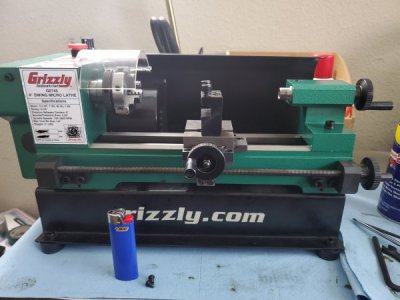Hello, I just got a new grizzly micro lathe and was wondering what all might be needed for a "basic" setup. I plan to mostly do small projects, pens, rings, threads and so on.
What tools would be best for setup and would come in handy? I'm coming from more of a 3D printing background, witch is pretty simple to say the least.
Any tips or suggestions would be greatly received!
What tools would be best for setup and would come in handy? I'm coming from more of a 3D printing background, witch is pretty simple to say the least.
Any tips or suggestions would be greatly received!


